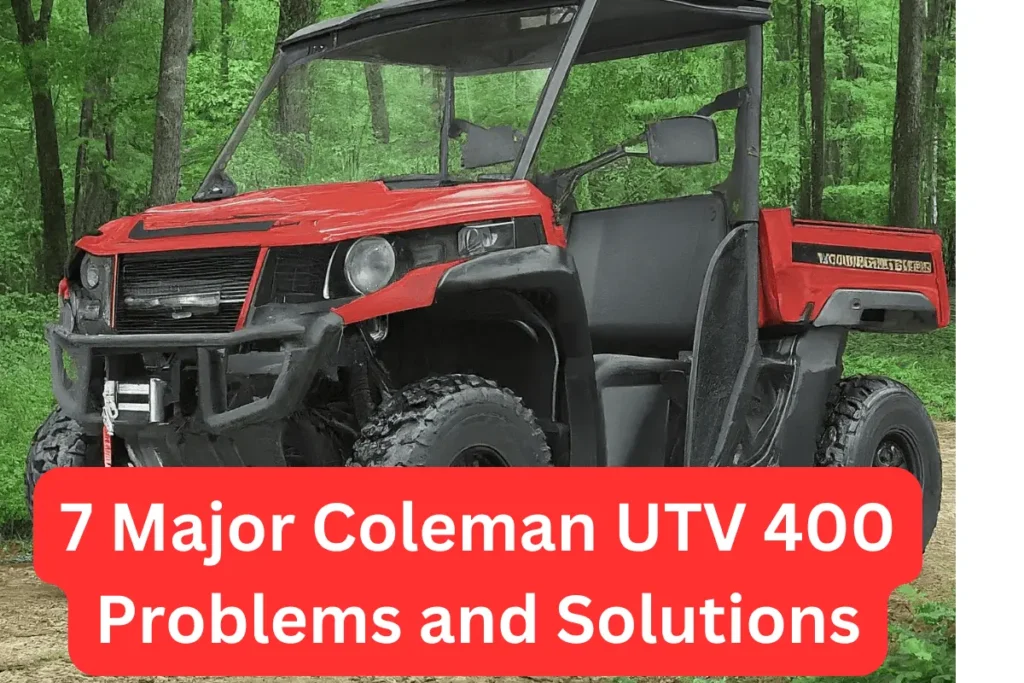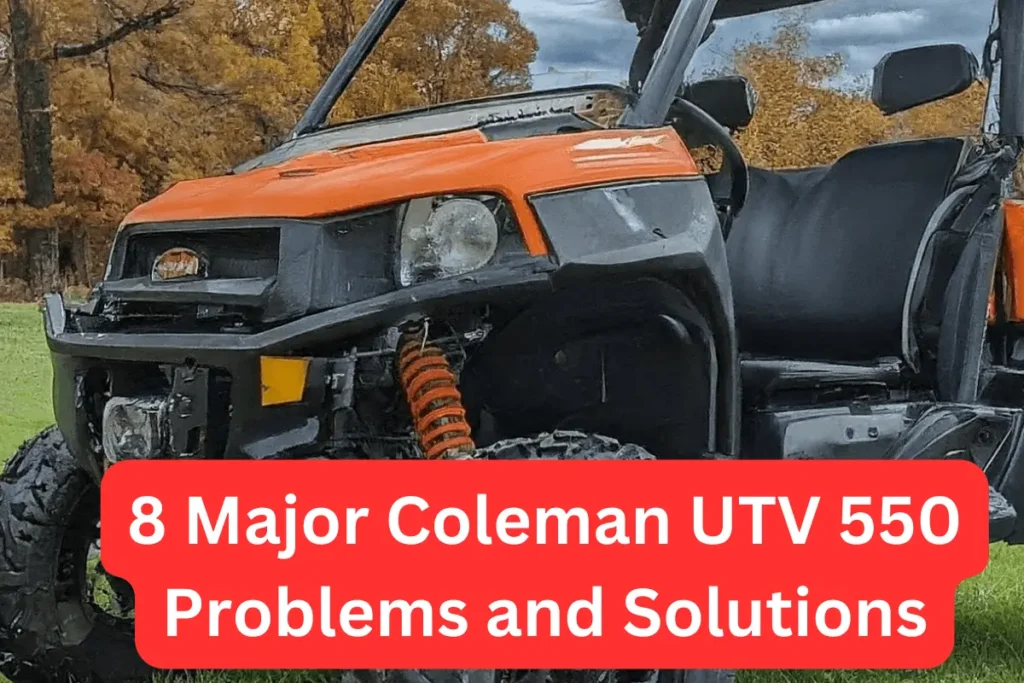The CFMoto ZForce 1000 Problems are a significant concern for owners who rely on this utility task vehicle. Despite its robust design, issues can impact performance and user experience. In this blog post, we’ll explore common issues of CFMoto ZForce 1000 and provide practical solutions to address them effectively.
The most common problems of CFMoto ZForce 1000 are transmission issues, engine overheating, coolant leaking from water pump, the engine won’t start, electrical problems, clutch issues, brake problems and PTO problems.
8 Major CFMoto ZForce 1000 Problems and Solutions
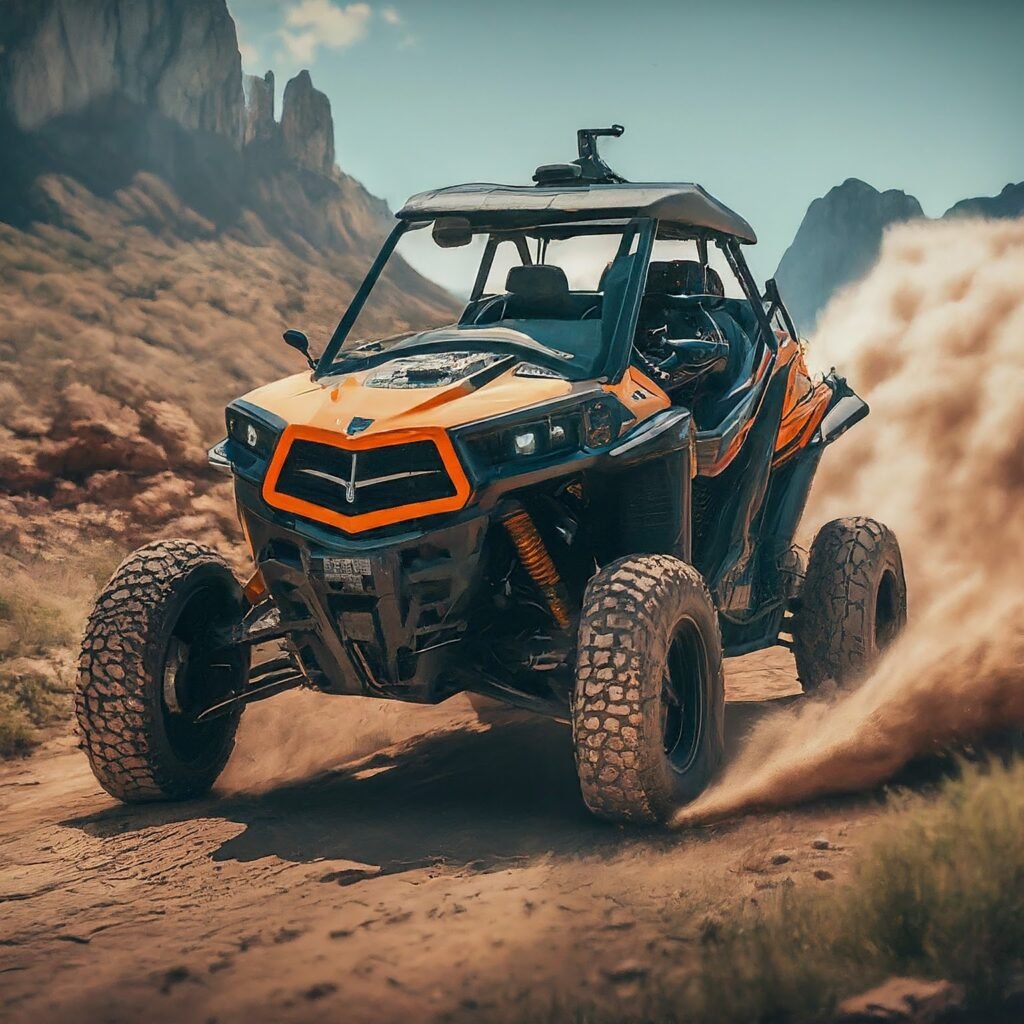
Now we are going to discuss the major CF Moto 1000 problems with their easy solutions.
You will also find some issues in CFMOTO ZFORCE 800.
1. Cfmoto Zforce 1000 Transmission Problems
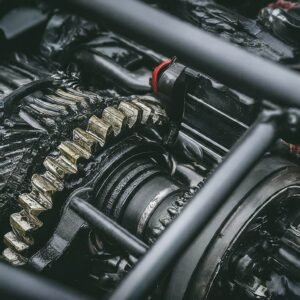
The transmission system of the CFMoto ZForce 1000 ensures that engine power moves smoothly to the wheels, enabling you to accelerate and change gears without any issues while off-roading. However, owners sometimes encounter problems with the transmission that can make the riding experience a bit rough.
One common issue is difficulty shifting gears. This means you might find it hard to move between gears, or they might slip when you’re trying to use them. This can make controlling the vehicle tough and even unsafe.
There are a few reasons why this might happen:
- Fluid Problems: The fluid that helps the transmission work properly might be too low or dirty, causing friction and rough operation. Make sure you check the transmission fluid and if it is old or low quality then change it with new high-quality fluid.
- Clutch Issues: The clutch helps you change gears in manual vehicles like the ZForce 1000. If parts of the clutch, like the plates or springs, wear out, it can make shifting gears hard or cause slipping. Keeping the clutch properly adjusted and replacing worn-out parts when needed is important.
- Mechanical Faults: Inside the transmission, there are gears, shift forks, and other parts that can wear out over time or get damaged. This can happen because of how much you use the vehicle, not taking care of it properly, or sometimes just because of a manufacturing issue. If there’s a problem with these parts, you might need a professional to fix it.
- Gear Linkage or Shift Cable Troubles: The parts that help you move the gears, like the gear linkage and shift cable, can also wear out. This can make shifting gears feel weird or difficult. Sometimes, you just need to adjust or replace these parts to fix the issue.
If you’re having trouble with your CFMoto ZForce 1000s transmission, here’s what you can do:
- Keep Up with Maintenance: Make sure you’re following the manufacturer’s recommendations for maintenance, like checking fluids and getting regular tune-ups.
- Figure Out the Problem: Look at your transmission to see if you can spot what’s causing the issue. It might be something simple you can fix yourself.
- Get Help if Needed: If you’re not sure what’s wrong or you can’t fix it on your own, don’t hesitate to take your vehicle to a mechanic who knows about CFMoto vehicles. They can figure out the problem and get things back in working order.
2. Engine Overheating
Imagine yourself riding through rough terrain on your CFMoto ZForce 1000, enjoying the thrill of the ride.
Suddenly, you notice something alarming – your vehicle’s temperature gauge is climbing higher and higher.
This could be a sign of an overheating issue, and it’s essential to address it promptly to prevent any damage to your vehicle and ensure your safety.
Overheating in the CFMoto ZForce 1000 can occur due to various reasons, and understanding these factors is key to effectively resolving the problem:
- Coolant Level and Quality: Low coolant or contaminated coolant can cause overheating. Coolant helps control the engine’s temperature by absorbing and releasing heat. If there’s not enough coolant, or it’s dirty, it can’t do its job properly.
- Radiator Blockage: A blocked radiator can stop air from flowing through, which makes cooling less effective. Dirt, debris, or leaks in the radiator can clog it up, stopping heat from escaping.
- Faulty Thermostat: The thermostat controls how much coolant flows through the engine to keep it at the right temperature. If it’s not working properly, coolant might not flow as it should, leading to overheating.
- Fan and Fan Relay Issues: The cooling fan draws air through the radiator to cool the engine. If the fan or its relay doesn’t work right, airflow is reduced, making cooling less efficient and causing overheating.
- Improper Riding Techniques: Riding too hard without letting the engine cool down can make overheating worse. High RPMs and heavy loads strain the engine, making it heat up more.
To fix overheating issues with your CFMoto ZForce 1000, follow these steps:
- Check Coolant Levels: Make sure the coolant reservoir has enough coolant of the right type. If it’s low or dirty, drain it and refill it with fresh coolant.
- Inspect the Radiator: Look for blockages or leaks in the radiator. Clean any dirt or debris from the fins to improve airflow.
- Test and Replace the Thermostat: Check if the thermostat opens and closes correctly by putting it in hot water. If it’s faulty, replace it to restore proper coolant flow.
- Evaluate Fan Operation: Make sure the cooling fan and its relay work properly. Replace any parts that don’t function correctly.
- Practice Proper Riding Habits: Avoid riding too hard for too long. Give the engine breaks to cool down and don’t overload the vehicle.
Also read Cmoto Zforce 950 Sport Problems
3. Coolant Leaking From Water Pump
Imagine you’re out on a thrilling off-road adventure with your CFMoto ZForce 1000 when, suddenly, you notice coolant leaking from the water pump. It’s a concerning sight, but understanding the reasons behind this problem and knowing how to fix it can help you get back on track without any worries.
One of the main reasons behind coolant leakage from the water pump is a faulty water pump seal. The seal is responsible for keeping the coolant contained within the pump, but when it becomes damaged or worn out, it fails to perform its job effectively, resulting in leaks.
Another potential cause of coolant leakage is a cracked water pump housing. Over time, exposure to rough terrain and off-road conditions can lead to wear and tear on the pump housing, causing cracks to form and allowing coolant to escape.
Additionally, a corroded water pump can also contribute to coolant leakage. Corrosion weakens the structural integrity of the pump, creating openings through which coolant can seep out.
Furthermore, overheating of the engine can exacerbate the problem of coolant leakage from the water pump. When the engine temperature rises excessively, it puts increased pressure on the water pump, accelerating corrosion on its components and potentially causing leaks to develop.
Improper installation or maintenance of the water pump can also lead to coolant leakage issues. If the pump is not installed correctly or if maintenance tasks such as tightening bolts and inspecting seals are neglected, it can result in leaks over time.
To address the issue of coolant leaking from the water pump, a systematic approach is required:
- Begin by inspecting the water pump for any visible signs of damage or corrosion. Pay close attention to the pump seal, housing, and surrounding components.
- If the water pump seal is found to be faulty, it will need to be replaced. Similarly, if there are cracks in the pump housing, it may be necessary to install a new housing to prevent further leaks.
- In cases of corrosion, thorough cleaning and treatment of the water pump may be required to remove rust and restore its functionality. However, if the corrosion is extensive, replacing the pump altogether might be the best course of action.
- Addressing the issue of engine overheating is crucial in preventing future coolant leakage from the water pump. Regularly monitor engine temperature and take steps to ensure proper cooling system function, such as checking coolant levels and inspecting radiator integrity.
- Finally, proper installation and maintenance practices are essential for preventing coolant leakage from recurring. Follow manufacturer guidelines meticulously and perform routine inspections and maintenance tasks to keep the water pump in optimal condition.
4. Engine Does Not Start
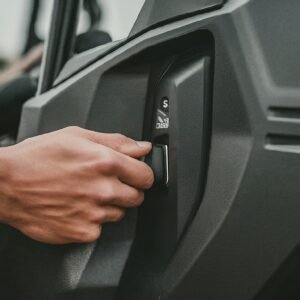
You’re all set to hit the trails with your CFMoto ZForce 1000, ready for an adventure. But when you turn the key, nothing happens.
The engine remains silent, refusing to start. It’s a frustrating situation, to say the least. So, let’s break down what might be causing this problem and what steps you can take to fix it.
One of the most common reasons for an engine failing to start is a lack of fuel. Your ZForce 1000’s engine needs fuel to ignite and run, so if the fuel tank is empty or the fuel level is too low, the engine won’t start.
The solution? Check the fuel gauge and ensure there’s enough fuel in the tank. If it’s low, fill it up with the appropriate fuel.
Another reason could be a problem with the battery. The battery provides the electrical power needed to start the engine, so if it’s dead or not functioning correctly, the engine won’t start.
Check the battery to ensure it’s fully charged and in good condition. If it’s not, try jump-starting it with another vehicle or replace it altogether.
A faulty spark plug can also prevent the engine from starting. The spark plug is responsible for igniting the fuel-air mixture in the engine’s cylinders, so if it’s worn out or damaged, the engine won’t start. Check the spark plug for signs of wear and tear, and replace it if necessary.
If the ignition system fails, your engine may not start. The ignition system includes components such as the ignition switch, wiring, and starter motor. Inspect these components for any damage or wear and replace them as needed.
Finally, carburetor or fuel injection issues can also prevent your engine from starting. The carburetor or fuel injection system may be clogged, leaking, or otherwise malfunctioning. Inspect these components for any problems and clean or repair them as necessary.
By addressing these common causes of engine starting issues, you should be able to diagnose and fix most problems with your CFMoto ZForce 1000’s engine. Remember to always follow manufacturer guidelines and safety procedures when working on your vehicle.
5. Electrical Problems
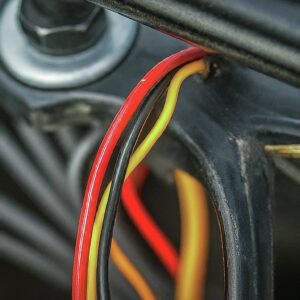
You may encounter electrical issues with your CFMoto ZForce 1000, which can be both frustrating and confusing. These problems can range from a drained battery to malfunctioning switches or relays, affecting your vehicle’s performance and safety.
One frequent cause is a faulty battery. If your battery fails to hold a charge or deliver the correct voltage, it can prevent your vehicle from starting or cause it to run poorly. Conducting tests on the battery and replacing it if necessary can help resolve this issue.
Another common cause is loose or corroded connections. Over time, connections can loosen or develop corrosion, disrupting the flow of electricity and resulting in issues such as dim lights or intermittent power. Regularly inspecting and tightening connections can mitigate these problems.
A malfunctioning alternator can also contribute to electrical issues. Responsible for charging the battery and supplying power while the engine is running a faulty alternator can lead to insufficient battery charge and difficulties starting the vehicle.
- Blown fuses are yet another frequent cause. Fuses safeguard electrical circuits from overloads by breaking the circuit when too much current flows through. When a fuse blows, it can cause various electrical components to cease functioning. Checking the fuse box and replacing any blown fuses can rectify this issue.
- Wiring issues can also be at fault. Damaged or broken wires can interrupt the flow of electricity, resulting in problems like shorts or open circuits. Additionally, improperly installed accessories or modifications can cause wiring issues. Inspecting the wiring and rectifying any damage or incorrect installations can alleviate these problems.
- Faulty switches or relays can likewise contribute to electrical problems. These components control various electrical functions in the vehicle, such as lights, fans, and motors. If a switch or relay malfunctions, it can prevent these components from operating correctly. Replacing faulty switches or relays can address this issue.
Finally, improper installation or maintenance practices can lead to electrical problems. Adhering to proper installation instructions and performing regular maintenance can help prevent issues like loose connections, damaged wiring, or component failures.
If you’re experiencing electrical problems with your CFMoto ZForce 1000, here’s what you can do:
- Test the battery to ensure it retains a charge and delivers the correct voltage.
- Inspect and secure all connections to prevent loosening and corrosion.
- Evaluate the alternator’s functionality and replace it if necessary.
- Check the fuse box for blown fuses and replace them as needed.
- Examine the wiring for damage and correct any issues.
- Replace any faulty switches or relays.
- Ensure that all accessories or modifications are correctly installed and operational.
6. Clutch Problems
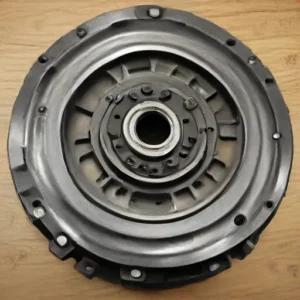
Clutch slippage is one of the most frequent issues with the CFMoto ZForce 1000.This happens when the clutch doesn’t engage properly, causing a loss of power. Another common problem is the clutch overheating, which can cause significant wear and tear.
It’s also worth mentioning clutch noise. A noisy clutch can indicate underlying problems such as worn-out components or improper installation. Paying attention to these signs early on can prevent more severe damage down the line.
Solutions
One effective solution for clutch slippage is to inspect and replace the clutch plates if worn out. Regular maintenance, such as checking the clutch cable tension and ensuring it is adequately lubricated, can also prevent slippage.
To combat overheating, make sure your clutch is well-rested. This can be achieved by adjusting your driving habits, such as avoiding excessive riding in high gear or heavy loads. Installing an aftermarket cooling kit can also provide additional cooling to the clutch system.
If you’re dealing with clutch noise, consider inspecting the clutch bell and rollers for wear and tear. Replacing these components often resolves the noise issue. Additionally, ensuring that the clutch is aligned correctly and installed can prevent noise from occurring.
7. Brake Problems

Here are some CFMOTO ZForce 1000 brake problems.
Brake Noise and Squeaking
One of the most frequent complaints among CFMOTO ZForce 1000 owners is brake noise, particularly squeaking sounds. This often happens because of worn-out brake pads, dust, and debris between the pads and rotors.
Regular maintenance, such as cleaning the brake components and replacing the pads when necessary, can resolve this issue. Using high-quality brake pads can also help in reducing noise.
Brake Fade and Reduced Performance
Brake fade or a noticeable reduction in braking performance can be alarming, especially during intense off-road activities.
This problem typically arises from overheating of the brake components. Ensure your brake fluid is fresh and at the correct levels to counteract brake fade.
Upgrading to high-performance brake pads and rotors designed for heavy-duty use can also enhance braking efficiency and reduce the risk of fade.
Soft Brake Pedal
Another common issue that CFMOTO ZForce 1000 owners may encounter is a soft or spongy brake pedal. This can be caused by air trapped in the brake lines or deteriorated brake fluid.
Removing air bubbles by bleeding the brake system and regularly changing the brake fluid can prevent this problem. Ensure that the brake lines and hoses are in good condition, and replace them if they show signs of wear or damage.
8. PTO Problems
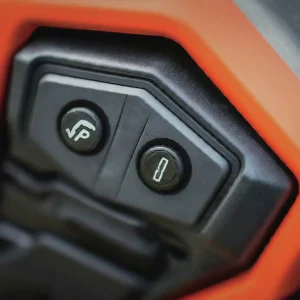
Here are some CFMoto ZForce 1000 PTO issues.
PTO Engagement Issues
One of the most common issues with the CFMoto ZForce 1000’s PTO is engagement problems. If you notice that the PTO is not engaging properly, it could be for several reasons.
First, check the PTO switch and wiring for any signs of damage or wear. Sometimes, a simple switch replacement can resolve the issue.
Another potential cause is a faulty PTO solenoid. The solenoid is responsible for activating the PTO, and if it’s not working correctly, the PTO won’t engage.
Replacing a defective solenoid can often fix the problem. Additionally, ensure that the PTO clutch is in good condition and debris-free.
Addressing PTO Slipping
PTO slipping is another issue that CFMoto ZForce 1000 owners might face. This can occur when the PTO belt is worn out or improperly tensioned.
Check the belt for signs of wear and replace it if needed. Proper belt tension is also crucial for preventing slipping. Refer to your owner’s manual for the correct tension specifications and adjust the belt accordingly.
If the belt is in good condition but slipping persists, the issue might lie with the PTO clutch. A worn-out or damaged clutch can cause slipping and may need to be replaced to work properly again.
Maintaining Your PTO System
Regular maintenance is critical to preventing PTO problems in your CFMoto ZForce 1000. Keep the PTO system clean and debris-free, and perform routine inspections of the switch, solenoid, belt, and clutch. Lubricating the moving parts can also help maintain smooth operation.
Conclusion
While the CFMoto ZForce 1000 is a reliable and powerful off-road vehicle, it is not immune to problems. By being aware of the potential issues and following the recommended maintenance and troubleshooting steps, CFMoto ZForce 1000 owners can ensure that their vehicles continue to perform at their best.
If you encounter any major CFMoto ZForce 1000 problems that you are unable to resolve on your own. So it is always recommended to seek the assistance of a professional mechanic to avoid further damage and ensure the longevity of your CFMoto ZForce 1000.
